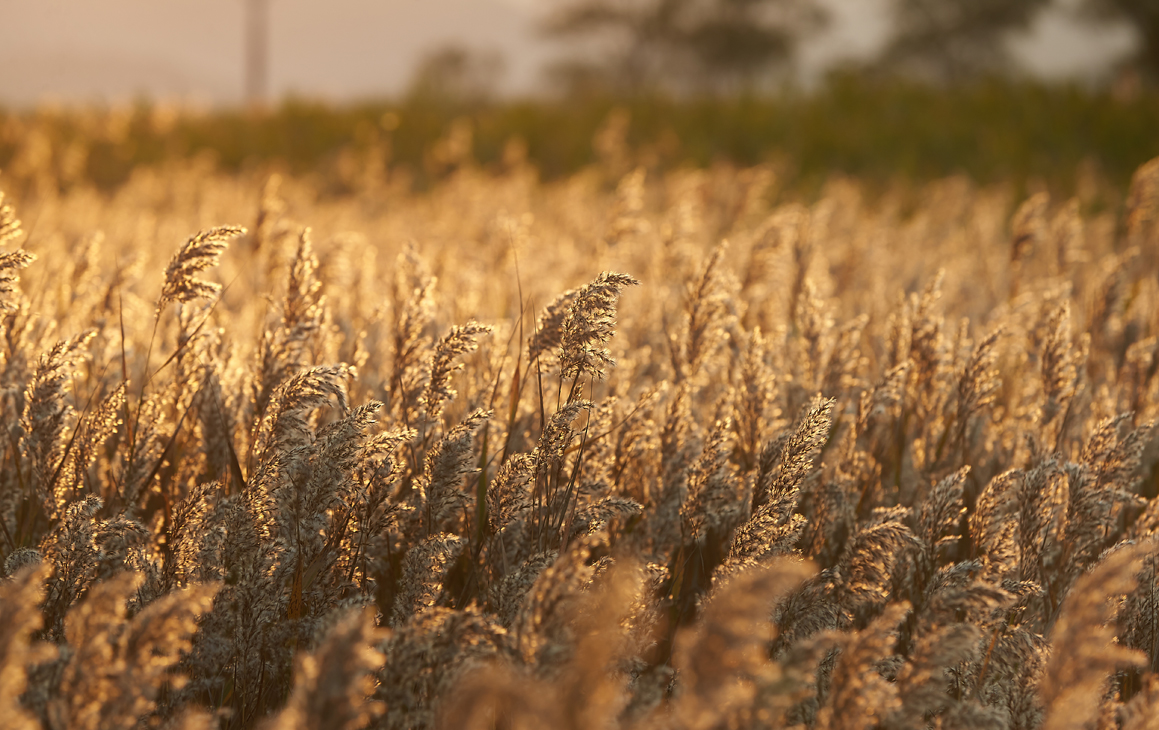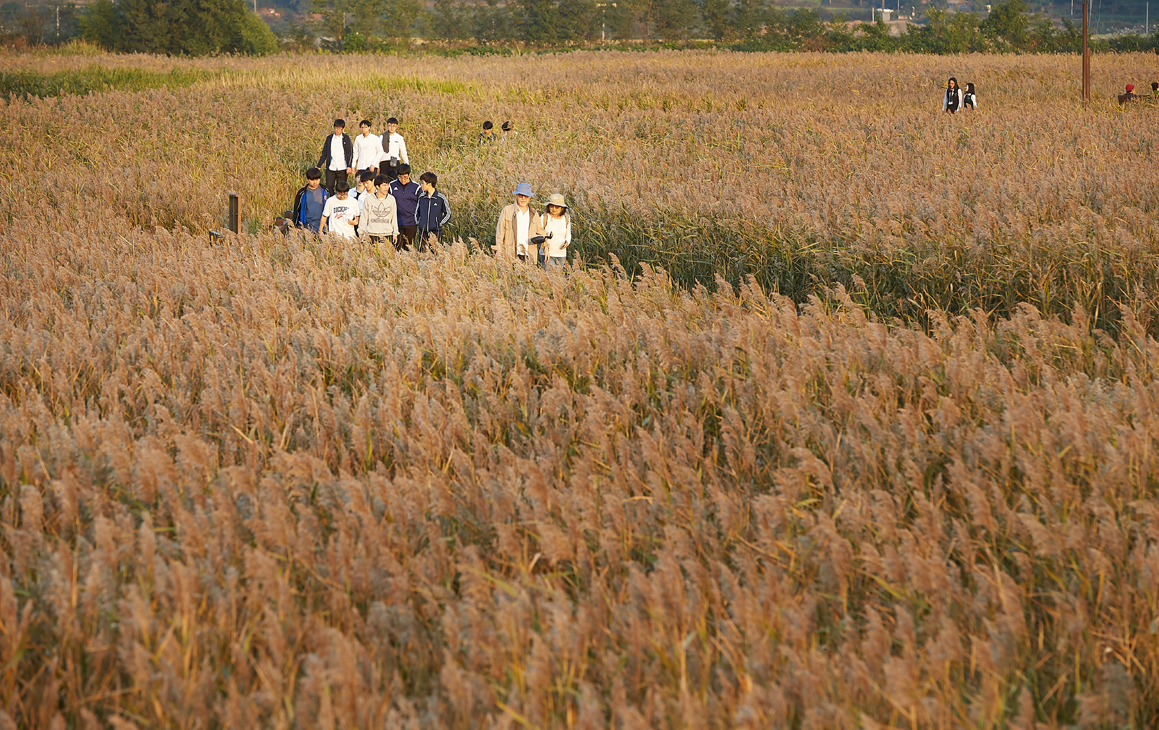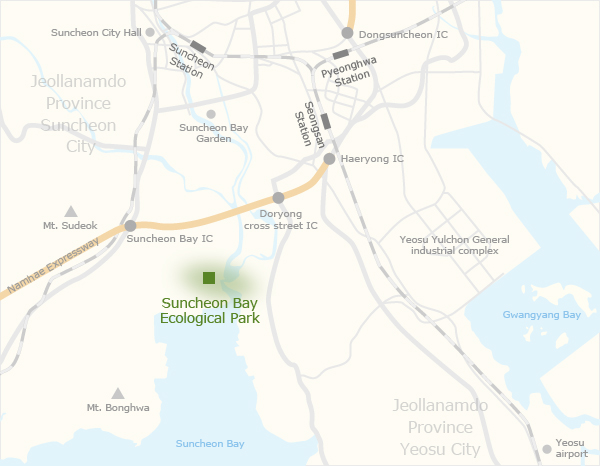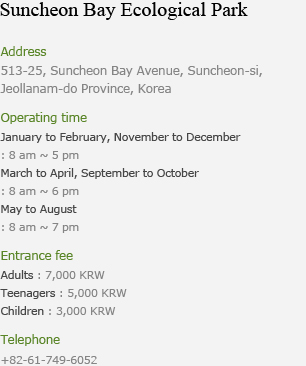

As one of the world’s top five coastal wetlands,
Suncheon Bay is known for having Korea’s largest field of reeds.
The area also provides an opportunity to experience the garden of the earth, replete with life.
Ecological Park
Located in the center of the southern coast of the Korean peninsula,
Suncheon Bay is a clean ecological area with an intact natural coastline.
After locals strived to understand and preserve the ecological values of the area, Suncheon Bay was finally
registered in 2006 with the Ramsar Convention, an international treaty to conserve wetlands across the planet,
and was designated in 2008 as State-Designated Cultural Heritage No. 41. Encompassing a 5.4km2 field of reeds
and 22.6km2 of mudflats, Suncheon Bay is a land of life offering both beautiful scenery and a wide biodiversity.

A trip to Suncheon on a clear, refreshing autumn day revealed the vast field of reeds
swayed by the wind beyond the bridge crossing over a stream.

Field of Reeds
Reeds usually are found on river shores and in wetlands, growing up to 3 meters tall.
The roots of reeds, often long enough to reach 2 meters, create an environment that enables
all living creature in the mudflats to survive and work as a septic field that absorbs impurities.
As the reeds are an excellent purifier to prevent red tides, the field of reeds serves
as a natural terminal sewage treatment plant, not only supporting and
maintaining a healthy ecosystem, but also controlling possible floods.
Housing seawater under the abundant reeds, mudflats are a rich repository
of the most productive marine ecosystems and species of various animals and plants.

Observatory
A half-hour walk through the forest path will bring the visitors to the observatory located on Yongsan Mountain,
where they can enjoy the memorable sunrise and sunset, the best scenery Suncheon Bay can offer.
Photographers say that this observatory is one of the ten spots in the country that promise the best sunset.

Looking down, visitors will never miss the vast golden field,
with artwork reading “Suncheon Bay, Land of Life” and “Suncheon, City of a Thousand Cranes.”
Suncheon Bay is a home to hooded cranes flying low above the water.
Not only hooded cranes, Natural Monument No. 228, but also 25 kinds of internationally rare birds
and 220 kinds of Korean species, including Saunders’s gulls, storks, spoonbills
and Chinese egrets, have this area as their habitat and wintering location.
Suncheon Bay is one of the wetlands in the world that have the greatest variety of rare bird species.

A tour around Suncheon Bay may end when the glow of the setting sun colors the extensive sky, rivers and fields.
In the late autumn with healthy natural vitality, Suncheon welcomes every visitor with the true energy of Mother Nature.
















